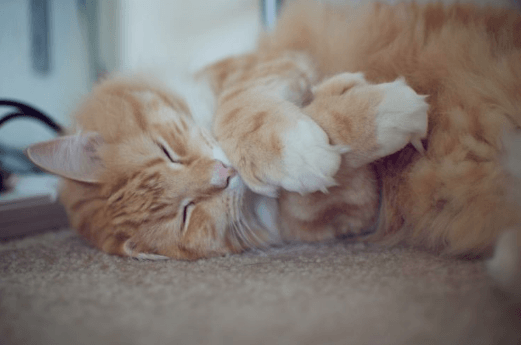
How many toes does your cat have? Go ahead and count. We'll wait.
Back already? Great! How many did you count? Eighteen, right? Congratulations! Your cat has a normal number of toes. Indeed, most cats have five toes on each front paw and four toes on each back toe. But did you know there is a condition known as "polydactyly" in which cats can be born with more than eighteen toes? Does this affect a cat's health? Is this something to be concerned about?
What Causes Polydactyly?
Even though you might never have encountered it yourself, polydactyly in cats is not rare. In fact, it even used to be common among some breeds, such as Maine Coon cats, until it was selectively bred out of them. It also occurs in other mammals, including dogs, mice, and even humans.


The exact gene responsible for the extra toes is unknown, but we do know it's a genetic mutation that is the result of an "incomplete" dominant gene inheritance. This means that any cat born with the gene should display the trait and be born with at least one extra toe; in clinical observation, however, the trait is only displayed about 50% of the time, meaning it is an "incomplete" dominance.
Is Polydactyly Harmful?
In most cases, polydactyly in cats does not produce any adverse health effects. While the extra toes won't grant a cat superpowers, it also typically won't lead to health problems. It also does not indicate other, related health issues. For the most part, polydactyly is merely a physical oddity and not necessarily a deformity, as most cats can run, jump, play, climb, and do all the things expected of cats with a normal number of toes.
Do Polydactyl Cats Require Extra Care?

While polydactyly is usually harmless, pet parents should still check their cats routinely for signs of nail overgrowth, infection, or soreness. Generally speaking, polydactyl cats require more consistent and careful nail clipping.
In some extreme cases, such as when the claws of one or more extra toes interferes with the cat's quality of life and regular claw trimming and other measures fail, the extra claw or claws might need to be surgically removed. However, this should only be a last resort, as declawing itself can have its own set of complications.
Polydactyl Cat Trivia
- Cats with extra toes are also called Hemingway cats in honor of the American novelist Ernest Hemingway, who had a colony of about 50 cats, about half of which were polydactyl.
- A Canadian orange tabby named Jake holds the Guinness World Record for the most toes on a cat. In 2002, his vet counted seven toes on each paw. However, there are rumors of a cat named Mickey Mouse who lived in the 1970s and had a whopping total of 32 toes, but that rumor has never been verified.
- Polydactyl cats were once favored by sailors, who believed them to be good luck and often took them aboard ships with them. It was thought that their extra toes led to better balance, and that that luck would help ships fare better in stormy seas. This maritime fascination might also explain why polydactyl cats were once mostly found in the Northeastern United States and Nova Scotia, and why polydactyly used to be fairly common among Maine Coon cats.
- One of the first cats to live in the White House was Theodore Roosevelt's cat Slippers, which was--you guessed it--a polydactyl!
Sources:
1. https://icatcare.org/advice/polydactyl-cats-cats-with-extra-toes/
2. https://www.thesprucepets.com/polydactyl-cats-4175908
3. https://www.floridawildvethospital.com/polydactyl-cats-an-amazing-genetic-mutation/


Follow Us